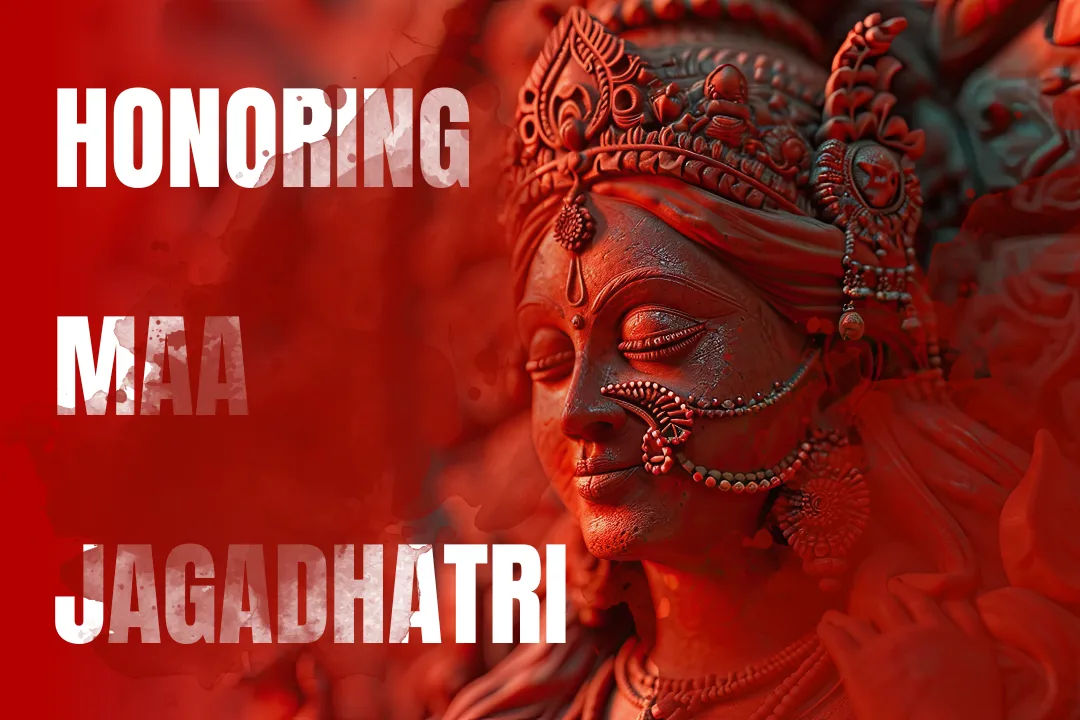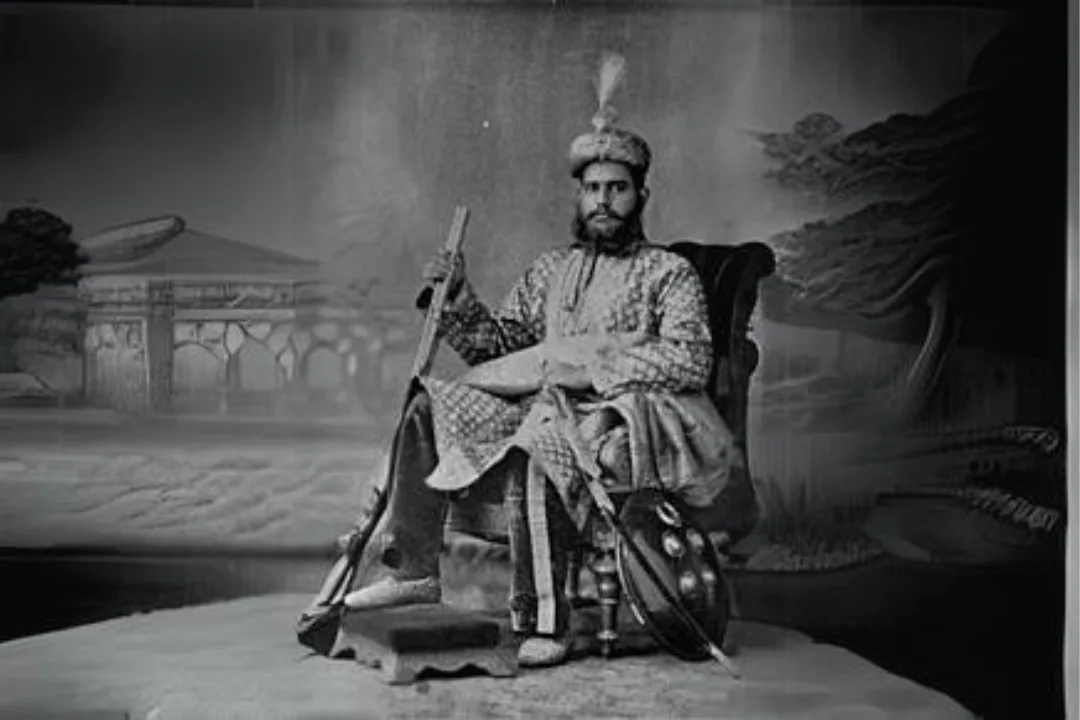Jagadhatri Puja is one of the most important Hindu festival celebrated in honour of Maa Jagadhatri – a benevolent form of Goddess Durga. This festival is enjoyed mainly in West Bengal, the districts of Chandannagar, Hooghly, Krishnanagar, and other zones of eastern India The festival also signifies the victory of ‘shubha = good’ against ‘asubha = evil; the motherly aspect of the ‘shakti; and the overall devotion of ‘matruka = motherhood. The term “Jagadhatri” stands for a meaning “the one who holds the world”, therefore the Goddess is associated with sustainer and protector of creation. Hence, the cultural show of the festival of Jagadhatri Puja represents the spirit of faith and determination of the cultural people of this country.
Origins and Historical Significance of Jagadhatri Puja
Jagadhatri Puja has got its beginning with the Bengali culture and it is quite old in that regard as far as history is concerned. As for its origin, there are different stories: the single most important story is that the Jagadhatri Puja became popular in Bengal through the support of Raja Krishnachandra of Nadia in the eighteenth century. Raja Krishnachandra who was devoted to Goddess Durga wanted to bring emotionless and motherly aspect among all the aggressive demeanor of Durga Puja; so he introduced the worship of Jagadhatri.
A specific legend is associated with Jagadhatri Puja – that of the slaying of the demon Mahishasura, which is also narrated in the tale of Durga Puja. As I have already mentioned, Maa Jagadhatri symbolizes passive or rather non-energetic forms of Shakti, unlike Durga who fights with Mahishasura. Finally after defeating Durga the gods were enthralled by the raw power of the deity and they asked for the soft form of the Goddess. In response Maa Jagadhatri came in the form of the goddess Shanti, calm and loving telling the world that it was safe and she would always protect it. The significance of Maa Jagadhatri is in the manifestation of protection motherly kind which feeds the universe.
Iconography of Maa Jagadhatri
Maa Jagadhatri goddess generally preferred to be seated in a comfortable position with royal appearance and Royal accessories. She has four arms: one holding conch shell (shankha), second with wheel (chakra), the third one carrying a bow and arrow, the fourth one holding a sword. All these symbols are images of cosmic power and protection signifying various aspects. The conch represents divine or spiritual energy and chakra represents order; the sword represents strength, and the bow represents righteousness.
It is in relation to this image that I have added a lion below Maa Jagadhatri as a symbol of courage and overlordship over all entities. She is also frequently depicted on top of an elephant, which in symbolic representation, refers to a common; concept of the ego. The iconography suggests that Maa Jagadhatri controls human ego and worldly desires and the devotees of Maa Jagadhatri have spiritual potential to come out of all these unpardonable weaknesses. Her face is serene and motherly in comparison with the fiercesome Durga and thanks to this she is loved by people.
Rituals and Celebrations of Jagadhatri Puja
Jagadhatri Puja is a sacred Hindu festival renowned as a major event, especially in the state of West Bengal, especially in Chandannagar city and adjoining areas of Hooghly and some part of Kolkata. Celebrated in the Hindu month of Kartik (October – November), this festival is mainly associated with Jagadhatri, the ‘Goddess Durga’ worshiped as the ‘Goddess of the World.’ It symbolises elements of triumph over the evil, power and kindness; and is compared to Durga Puja but has regional character and practices.
The ceremonials of Jagadhatri Puja start with Pratima Sthapana that refers to installation of clay idol of the goddess, normally having four arms and seated on lion. In the present work, the artists create specific figures of the deity with numerous accents and gestures, which convey her patronage and matriarchal tenderness. First of all, Bodhana commemorates the evoking of the goddess while Amantran and Adhivasa are meant for inviting the deity within the idol. Every day both prasād and Pushpanjali – offering of bouquet of flowers, and Aarti – the lighting of lamps, is conducted along with reciting the religious sayings and singing the soulful hymns.
On the chief day of Jagadhatri Puja, lavish Mahaprasad (Grand Feasts are performed) of fruits, sweets and other eatables are offered to the deity. The food offering is then shared as prasad to the devotees After that, the bhog is distributed to the devotees. The puja pandals (temporary temples) become a big draw, particularly in such areas like Chandannagar where the pandals are made to look even more attractive with beautiful lights and artistic works that are exclusive specialty of the city.
Public awareness and cultural activities enrich the festival’s spirit with ecstatic performances such as myths related to the goddess from the plays, songs and dance. Holders of these beliefs feel that engaging in these ceremonies avails blessings, wealth, and shield to one’s home.
The last day is a procession with the idols through the town, accompanied with drumming, singing as well as dancing. The immersion or Visarjan is on the fourth day of the festival to imply that the goddess has returned to her seat in heaven but will always come back to protect her people. This is a parade by itself, which sees thousands of people coming out to give their final send off to the goddess.
Jagadhatri Puja characterizes the benevolent force of power, hence the call of togetherness, joy and pride of community. By means of opulent rites, art productions, and celebrations, it underlines cultural and non secular legacy of Bengal, particularly of Chandannagar.
Major Jagadhatri Puja Locations
While Jagadhatri Puja is celebrated across various parts of West Bengal, certain regions are particularly renowned for their unique style of observance:
Chandannagar: Also referred to as the birthplace of the Jagadhatri Puja, the city of Chandannagar has some of the biggest celebrations. Another tradition associated with the city’s light is visually impressive: artists devise and install lights that bring in visitors from all over the country. They are very similar to the biggest festival of Bengal called the Durga Puja and it is celebrated with much more vigour in Chandannagar than in Kolkata.
Krishnanagar: This region gives its celebration a high cultural reverence since the tradition of this festival goes back several centuries. The idols are large and elaborate and decoration of the area is also impressive attracting devotees and art lovers who come to see the works at Krishnanagar.
Hooghly: Haaaansaav is remembered here in traditional way through practicing of rituals, feasting and everybody being under one roof as a family. The devotion inside them and the rituals that are included are customarily traditional and make Hooghly one of the paramount locations through which you feel the whole zest of Jagadhatri Puja.
Significance of Jagadhatri Puja in Modern Society
Jagadhatri Puja has a great importance in the life of devotees, as this is the day the goddess brings in strength and ease in life, defeating the signification of aggression. In regards to today’s culture of speed and acquisition, which has become prevalent almost in every part of the world, the description of Maa Jagadhatri gives a signal of its advocates potential as a dose of moderation, patience, and love. Symbolism of Goddess standing on the ego (here depicted by elephant) stresses on self restraint which is more important today than ever before.
The virtues followed during celebration of Jagadhatri Puja are able to provide unity and harmony among the people through solidarity, irrespective of age, caste or economic status. Since they involve art, music and dancing, the festival give the people a point of identity and pride in the cultural activities of their community.
Environmental Aspects and Sustainability Efforts
However, it must understood that new important components have been added into the tradition in the recent past, of which environmental awareness is a paramount example. Some puja committees have added a conscious effort to ecological aspects by using green materials for idol and by avoiding polluting water bodies while immersing the deity. Some measures are also tried to be taken for the awareness of people for conservation and another way to perform it in the next cycle sustainably.
Conclusion
There is no way one can look at Jagadhatri Puja as a mere shrine because it is an artistic spiritual carnival for the people of today. Maa Jagadhatri, therefore, is loved ardently symbolizing maternal and godly protection, power and mercy-sea. She has become a symbol of peace, strength throughout her statues along with her gentle nature gives comfort to the people that come to her feet every year.
This festival alone became the symbol of the Bengali culture – celebrating togetherness, spirituality and joy. From the exquisiteness of idols and pandals to the spiritualism in rituals and the enthusiasm of electrifying processions that illuminates the streets, Jagadhatri Puja encapsulates the wonderful divine qualities of Maa Jagadhatri fully, which make this festival dear to every devotee of Maa Jagadhatri.
So, this is all for now, we’d love to hear from you. Feel free to share your experiences or questions in the comments below! and don’t forget to share them with friends and others who might benefit! Save Consumerviews in your bookmark for easy access, and follow our Facebook Page Consumerviews India for more articles like this.











0 Comments